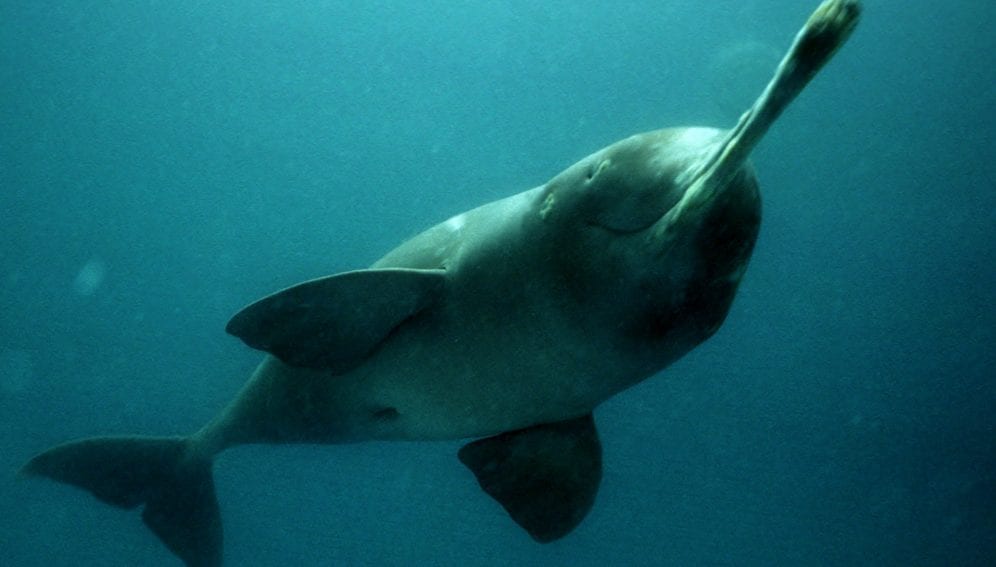By: Smriti Mallapaty
Send to a friend
The details you provide on this page will not be used to send unsolicited email, and will not be sold to a 3rd party. See privacy policy.
[KATHMANDU] The first study in two decades of the Ganges river dolphins in Nepal estimates that the numbers of the endangered species have increased to about 50 individuals. This is an improvement over the two dozen sightings recorded in the 1990s.
The Ganges river dolphin (Platanista gangetica), commonly known as susu, is native to the Ganges river systems flowing through Nepal, India and Bangladesh. It is a solitary mammal and the only species of dolphin known to be blind. The species has been on the Red List of the International Union for Conservation of Nature since 1996, with populations estimated at 3,550—3,000 in India and 500 in Bangladesh.
The study led by Shambhu Paudel, assistant professor of wildlife biology at Kathmandu Forestry College, recorded dolphin sightings during low-river flow before and after the monsoon season in three major tributaries of the Ganges — Karnali, Sapta Koshi and the Narayani.
Paudel and his team observed 28 dolphins pre-monsoon and 21 post-monsoon and used a statistical tool known as N-mixture model to extrapolate an actual population of between 37 and 42 dolphins. “I was able to sight dolphins in the Narayani for the first time in two decades,” Paudel tells SciDev.Net.
More importantly, the surveyors observed that dolphins preferred to be in deep pools and at river confluences, at a mean depth of 3.5 metres. “If the river system water level goes below this minimum depth requirement, the survival of dolphins in Nepal could be in question,” says Paudel, who sees the risk higher during the post-monsoon season.Drying rivers, barrages and dams constructed along the river as well as the presence of fishing boats and stone quarries represent some of the major threats faced by dolphins in Nepal.
While Nepal has developed conservation action plans for tigers, elephants and one-horned rhinoceros, there has been little interest in river dolphins, Paudel says. He plans to develop a detailed recovery plan by improving survey methods to include acoustic detection. “Using a combined acoustic and visual approach, we will be able to account for the missing underwater population of river dolphins,” Paudel adds.
The situation is slightly more promising in India where the government declared the susu a national aquatic animal in 2009, and launched a ten-year Conservation Action Plan, prepared by Ravindra Kumar Sinha, a zoologist at Patna University in Bihar, the Indian state adjacent to Nepal.
Monitoring the population of the Ganges dolphins is important to ensure they do not go extinct like the Chinese river dolphin, says Sinha who has spent decades trying to protect the species. “Nepal’s river dolphins face severe threats from declining river flows, major construction works, and the activities of local fishermen,” Sinha tells SciDev.Net.














